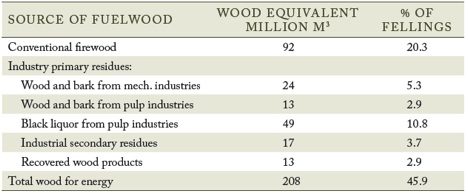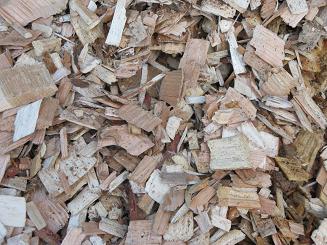by CD Foster, J Gan, and C Mayfield
Biomass is the most dominant renewable energy source used in the world today, comprising almost 80 percent of the total supply (IEA 2006). A number of factors make bioenergy use favorable globally. Climate change, the questionable long-term sustainability of fossil fuels, security, and a host of other factors together increase interest in biomass utilization for energy. As nations strive to find sustainable, home-grown sources of renewable energy, the importance of biomass, especially woody biomass, is elevated, for the most part because of its vast availability.

Bioenergy can be produced from a variety of sources including agricultural residues and forest residues ( harvesting residues, processing residues, urban wood waste, and short rotation woody crops). Currently, biomass comprises 10.6 percent of the world’s total energy supply (IEA 2006). With 30 percent of the Earth’s surface forested, forest residues could play a more significant role in the amount of biomass produced and used globally.
No country uses wood for energy at its potential, although recent trends show an increase in utilization in many parts of the world. In 1990, about 46 percent of harvested timber was used for fuelwood in the European Union (EU). Processing residues accounted for about 50 percent, while conventional fuelwood comprised 44 percent (Hakkila and Parikka 2002).

OECD Countries
Biomass accounts for 3 percent of the energy supply in Organization for Economic Cooperation and Development (OECD) countries. The OECD is a group of 30 countries, including the United States, working together to address the economic, social and governance challenges of globalization. 3 percent is a significant number considering the use of renewable resources only accounts for approximately 6 percent of the total energy supply. Since 1990, solid biomass use has increased by almost 2 percent and biomass generated electricity, on average, has increased about 3 percent per year (IEA 2006b). Heat production from biomass has also increased substantially, both in facilities producing heat and those producing both heat and power.
- Biomass Utilization by the United States
- Biomass Utilization by the European Union
- Biomass Utilization by Developing Countries
References
- Foster CD, Gan J, Mayfield C. 2007. Global Utilization of Biomass for Bioenergy. In: Hubbard, W.; L. Biles; C. Mayfield; S. ashton (Eds.). 2007. Sustainable Forestry for Bioenergy and Bio-based Products: trainers Curriculum notebook. athens, ga: Southern Forest Research Partnership, Inc.
- Hakkila P, Parikka M. 2002. Fuel Resources from the Forest. In: Richardson J, Bjorheden R, Hakkila P, Lowe AT, Smith CT (eds). Bioenergy from Sustainable Forestry: Guiding Principles and Practice. Dordrecht, The Netherlands: Kluwer Academic Publishers: 19–48.
- IEA 2006a. Renewables in Global Energy Supply. Paris: 15 p. International Energy agency.
- IEA 2006b. Renewables Information. Paris: International Energy agency Energy Statistics.
